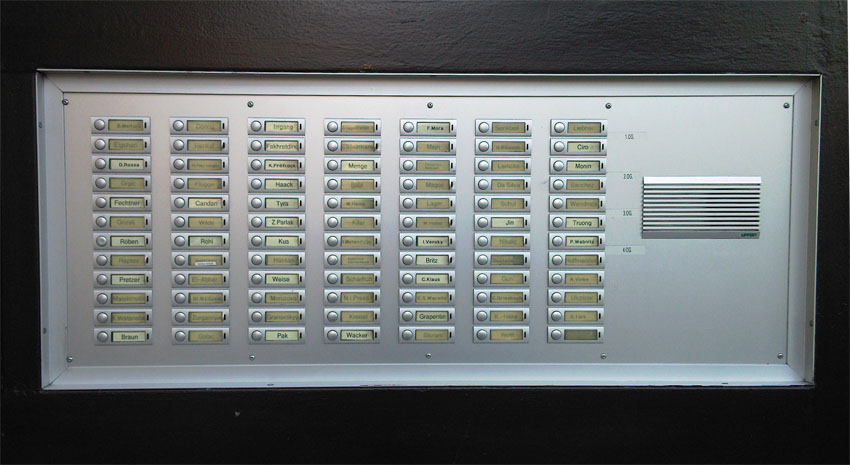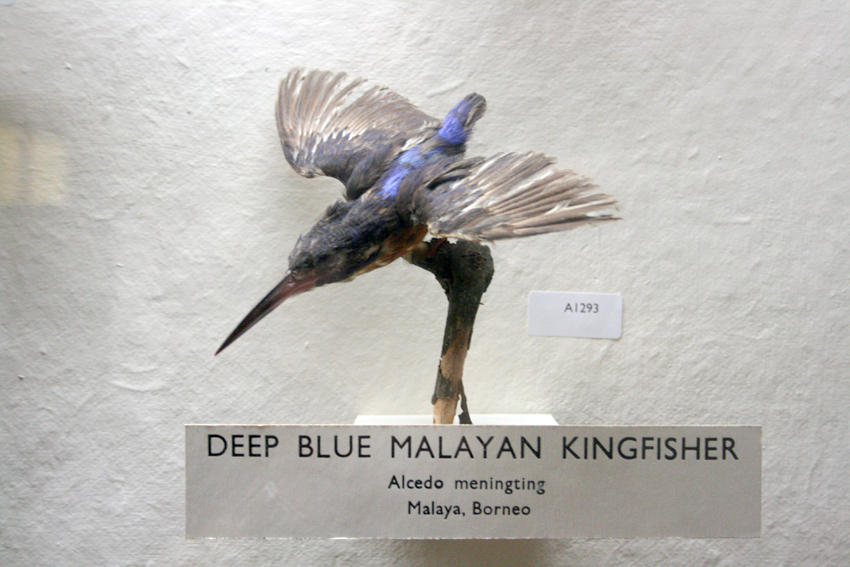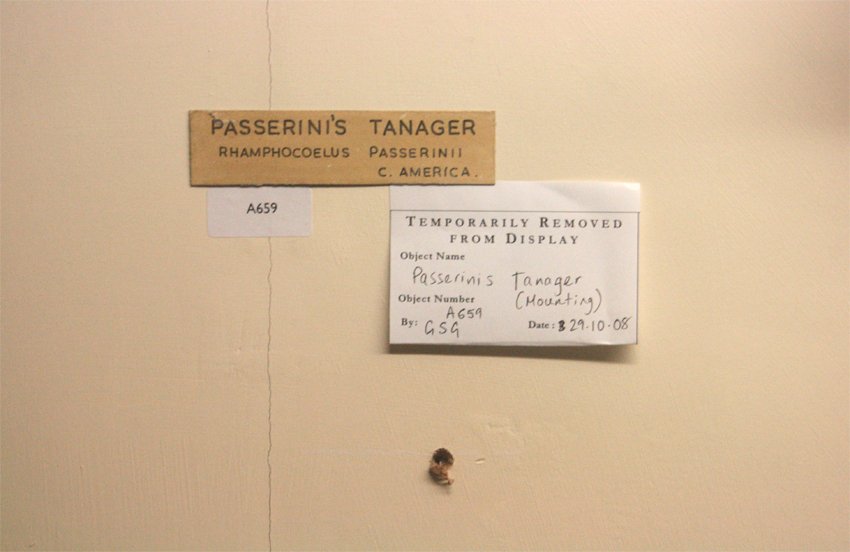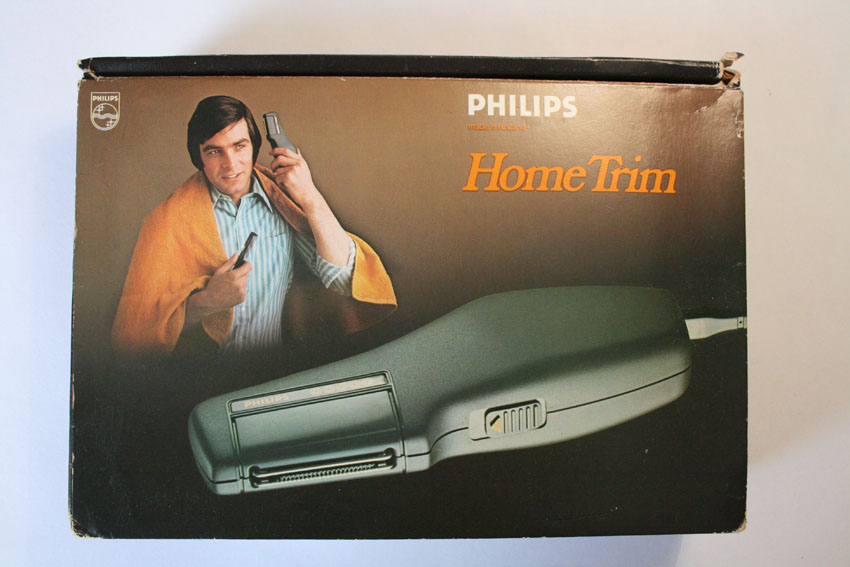

 Went over to Freud's house in Finchley at the weekend. He only lived there for about a year of his life (he died shortly after leaving Nazi occupied Austria, in 1939) But importantly it houses his library, furniture and collections. His passion for collecting ancient artefacts, was second only to his addiction to cigars apparently- many small figurines were housed cabinets, shelves and noteably filling approximatley half of his desk- i'm going to refrain from talking about fetishism here or suggest that a historical item from some egyptian burial chamber is an absent phallus. Freud used his collection as a metaphor for psychoanalysis using it to show how conscious material wears away whilst the unconcious is relativley unchanging- i.e. in being buried, the artefacts in the room were preserved. There are very few things connecting Freud's collection together; the fact that the great man owned them is probably validation enough as to their criteria for being a collection, however they were all very old some up to 4500 years old, of either ancient near eastern, greco, egyptian, roman or chinese. The most interesting thing about this carefully accumulated, kept and displayed 'museum' is how subjective it is. Anyway, I think he's an interesting guy with an interesting collection- i hope i can say more later about it but this might be it.
Went over to Freud's house in Finchley at the weekend. He only lived there for about a year of his life (he died shortly after leaving Nazi occupied Austria, in 1939) But importantly it houses his library, furniture and collections. His passion for collecting ancient artefacts, was second only to his addiction to cigars apparently- many small figurines were housed cabinets, shelves and noteably filling approximatley half of his desk- i'm going to refrain from talking about fetishism here or suggest that a historical item from some egyptian burial chamber is an absent phallus. Freud used his collection as a metaphor for psychoanalysis using it to show how conscious material wears away whilst the unconcious is relativley unchanging- i.e. in being buried, the artefacts in the room were preserved. There are very few things connecting Freud's collection together; the fact that the great man owned them is probably validation enough as to their criteria for being a collection, however they were all very old some up to 4500 years old, of either ancient near eastern, greco, egyptian, roman or chinese. The most interesting thing about this carefully accumulated, kept and displayed 'museum' is how subjective it is. Anyway, I think he's an interesting guy with an interesting collection- i hope i can say more later about it but this might be it.
Seizure
A great temporary installation in a condemned flat in Elephant & Castle by Roger Hiorns. The whole flat was filled with copper sulphate solution and as a result (I'm missing out alot of time and process but this is the jist) crystals formed on all the surface- baths, light fittings- very special and everyone should go see it before the close on the 30th Nov.

Horniman Museum
Quotes and Books
There are a few quotes and pieces that I want to keep hanging around and be in my head so I'm going to write them up here and I might pay more attention to them. Illuminations: Unpacking My Library, Walter Benjamin, Pimlico, London, (1999):
"not yet touched by the mild boredom of order"
"What I am really concerned with is giving some insight into the relationship of a book collector to his possessions, into collecting rather than a collection. If I do this by elaborating on various ways of acquiring books, this is something entirely arbitrary."
"For what else is this collection but a disorder to which habit has accommodated itself to such an extent that it can appear as order?"
"to a true collector the acquisition of an old book is it's rebirth."
Interpreting Collections and Object, ed. Susan M. Pearce, 1994, Routledge (New York and Oxon) Ch22 The Urge to Collect, Susan M. Pearce:
"A collection is basically determined by the nature of the value assigned to the objects, or ideas possessed. If the predominant value of an object or idea for the person possessing it is intrinsic, i.e., if it is valued primarily for use, or purpose, or aesthetically pleasing quality, or other value inherent in the object or accruing to it predominant value is representative or representational, i.e., if said object or idea is valued chiefly for the relation it bears to some other object or idea, or object, or ideas, such as being one of a series, part of a whole, a specimen of a class, then it is the subject of a collection." (Durost, 1932: 10)
"the collection is greater than the sum of it's parts"
Ch 26, Collecting reconsidered, Susan M. Pearce:
"Above all, it [material entering a museum] comes in groups, in sets of material."
"What links these collections [those in museums created by famous collectors] with their humbler cousins of the matchbox tops and beer mats is the lack of an intellectual rationale by which the material and it's acquisition was informed, and this nothwithstanding the fact that cigarette cards and the like are classified into sets which collectors try to complete: the sets have no rhyme or reason outside the covers of their albums.
Ch28, No Two alike: Play and Aesthetics in Collecting, Brenda Danet and Tamar Katriel:
"The pinnacle of achievement [validation?] is to have one's collection displayed by a museum."
"Some people collect 'real' objects while others collect imaginary representations of objects. Thus while Nabokov hunted real butterflies in the fields, the Viscountess Lambton created a total environment for herself in which not only her clothes but nearly every item in her home had a butterfly emblem on it (Johnstow and Beddow 1986."
"For an object to become part of a collection it has to be reframed as a collectible."
"To treat an object as a collectible is to take it out of it s natural or original context and to create a new context for it, that of the collector's own life and the juxtaposition with other items in the collection."
"The principle of no-two-alike" "same-but-different" "Humphrey has suggested that the paradigm for the experience of beauty in sameness-within-difference is rhyme. Just as a poem rhymes, so objects may rhyme: 'consider the nature of a typical collection, say a stamp collection. Postage stamps are, in structuralist terms, like man-made flowers: they are divide into 'species,' of which the distinctive feature is the country of origin, while within each species there exists tantalizing variation. The stamp-collector sets to work to classify them. He arranges his stamp in an album, a page for the species of each country. The stamps on each page 'rhyme' with each other, and contrast with those on other pages."
on completing a series or set: "To play with series is to play with the fire of infinity. In the collection the threat of infinity is always met with the articulation of the boundary' (Stewart, 1984: 159)" "When asked why he thought he had been attracted to stamps, one stamp-collector we interviewed replied, 'because you know exactly what you are missing'."
Miniatures: "'There are no miniatures in nature; the miniature is a cultural product, the product of an eye performing certain operations, manipulating, and attending in certain ways to the physical world' (Stewart, 1984: 55) [...] It is also pertinent that a miniature world is a more perfect world; the blemishes visible to the naked eye in life-size objects are no longer visible."
Ch30, Susan Stewart:
"The collection offers example rather than sample, metaphor rather than metonymy."
"Thus the miniature is suitable as an item of collection because it is sized for individual consumption."
"The collection relies upon the box, the cabinet, the cupboard, the seriality of shelves. It is determined by these boundaries, just as the self is invited to expand within the confines of bourgeois domestic space. For the environment to be an extension of the self, it is necessary not to act upon or transform it, but to declare its essential emptiness by filling it. Ornament, decor and ultimately decorum define the boundaries of private space by emptying that space of any relevance other than that of the subject."
"The collector can gain control over repetition or series by defining a finite set."
Ch37, Collectors and Collecting, Russell W. Belk:
"In a sense, many collections are 'discovered'."
"A common strategy to avoid completion is to redefine or add new collecting interests as completion nears. [...] The other strategy is to develop a 'serial collection' in which the items in the collection are owned sequentially rather than simultaneously."
"The vertical/ horizontal dimension reflects the degree to which a collection is housed in one centrally located array (often literally ‘vertical’ in it’s position on the wall or on shelves) as opposed to being spread or scattered throughout space (so that visiting the entire collection requires ‘horizontal’ movement). An illustrative example from the data is a collection of figurines, statuettes and small porcelain objects that occupied two glass-enclosed cases on both sides of the fireplace of one informant’s living room; in a sense, if an object were removed from these vertical arrays, it would no longer belong to the collection. In vivid contrast, another informant’s vast collection of heart, ducks, geese, apples and strawberries has expanded horizontally throughout her house; these objects pervade her space and appear in the most unsuspected places, which turned our photographic exploration of her home into a hunting expedition for hearts and geese."
Hair Trimmer
Tate Liverpool
I went to see the Gustav Klimmt exhibition at Tate Liverpool and whilst i have to confess to not being that into Klimmt, the other exhibition : a mini retrospective of 'contemporary' art, was sweet. There were examples from loads of chill dudes, from Andy Warhol to Sarah Lucas (i know that isn't all art or whatever but it was a good selection i thought.) Anywho, the best thing was that the Tate encourages kids to draw the arts and stuff. It has guys handing out paper and crayons and then collecting drawings from the kids and it was great watching the guy recieve their submissions "oh what a brilliant Mondrian." to the kids with squares and red, and to everyone elses incomprehensible squiggles "Is that a Pollock?". Priceless.
Berlin
I came back from the Berlin 'DMY' Design Festival with a few of realisations: helvetica is beautiful, German words- i.e. lösswasserspeisung are fantastic- so long and so much fun to say- i might start joining words up more often, and the notion of celebrity design, and designers is whack: Tom Dixon exhibited and Karim Rashid spoke at the Bombay Sapphire Gallery and both made me shiver in a bad way. Berlin is different to any other city I've been to. It doesn't seem to have a distinctive heart, there were some roads that had more stuff on than others but still it was easy to walk miles without much happening. It did however, make for a very relaxed atmosphere and the space itself was really open, wide roads and spaced out buildings etc.
The design festival was a bit underwhelming to be honest but the each bars, sweet book/print shop, tiny galleries and cheap tasty falafel made up for it. It was nice to be out and about but it made me glad that i was in London- design wise it doesn't get much better.

The Philosophy of the Overlooked: Collecting
I attended a talk at the ICA about collecting- something I'm pretty interested in and fancy doing a project around, especially after this talk. It started out with a film - 'possessed'- by an ex- Goldsmiths guy about hoarding which was fascinating and thought provoking. There were loads of interesting thoughts and quotes which could start projects off. My favourite however were as follows: Mike Presdee, a cultural criminologist and lecturer spoke about how rather that being pathological, collecting was ore transgressive. A collector abstracts an object from it 's intended purpose and almost fetishises it: a stamp collector does not intend to post letters. A collector interrupts the consume, throw, buy cycle by hanging on to the item of collection. Another interesting thought was raised by John Sellers, a philosophy lecture. He put the collector in a Venn diagram - between the hoarder, who harboured an uncontrollable need and desire to have and keep items, and the museum curator who orders, arranges, organizes and acquires through an intellectual interest.
Something else which interests me is the criteria and conditions for something joining a collection.
I hope to do more with this so watch this space i guess.



 I think it's my new favourite place.
I think it's my new favourite place.


